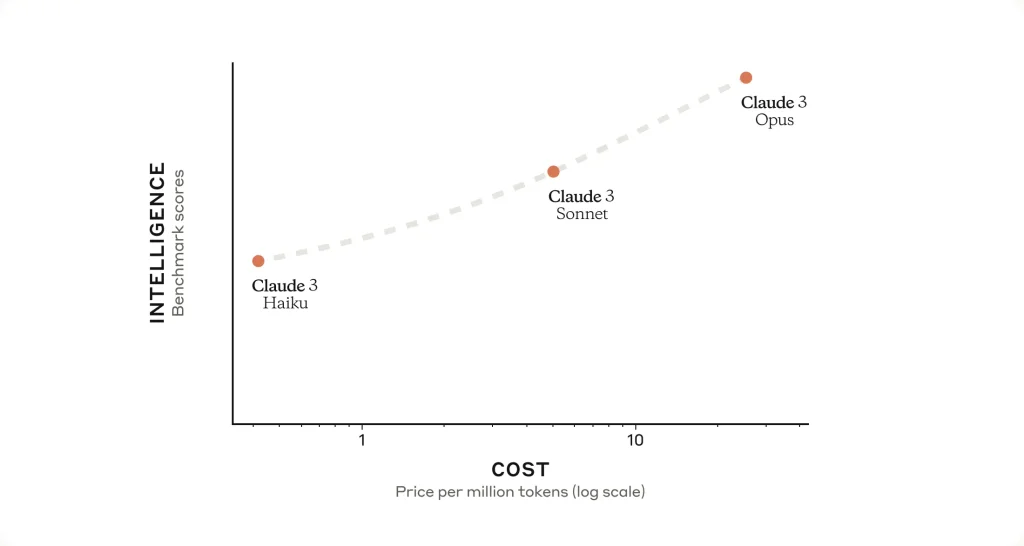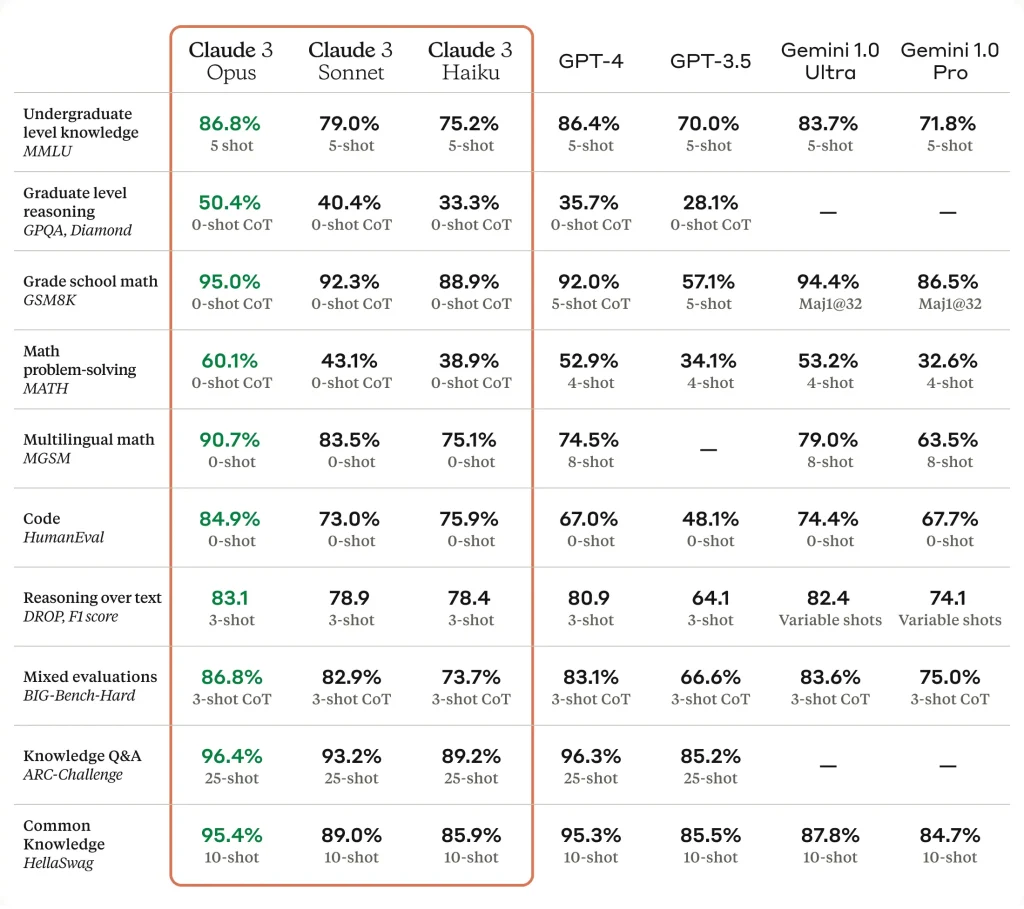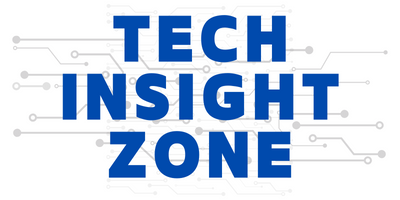The tech world is abuzz with the release of Anthropic’s Claude 3, a new suite of AI models promising to revolutionize various fields.
But before you get sucked into the vortex of press releases and flashy headlines, let’s take a deep dive and see what Claude 3 truly brings to the table.
Faster, Smarter, More Flexible: The Three Pillars of Claude 3
Imagine a world where your AI assistant can not only understand complex questions but also analyze charts and graphs in a research paper, all while costing less than your morning coffee.
That’s the ambitious vision Anthropic paints with Claude 3. This isn’t a single model, but a symphony of three, each catering to specific user needs:
a. Haiku:
The nimble and cost-effective maestro of the trio, Haiku excels in tasks demanding immediate responses. Think real-time customer support where Haiku can answer questions, translate languages, or even moderate content, all at lightning speed.
Imagine a customer asking, “What are your return policies?” in Spanish. Haiku, in a flash, can not only translate the question but also provide a clear and concise answer, potentially saving your business both time and money.
b. Sonnet:
Striking a perfect balance between speed and intelligence, Sonnet is the workhorse designed for enterprise applications. It can power data processing, generate sales forecasts, or even write basic code with remarkable accuracy.
Think of Sonnet as your tireless assistant, sifting through mountains of data to identify trends, or crafting personalized marketing emails that resonate with customers.
c. Opus:
The crown jewel of the Claude 3 family, Opus boasts near-human levels of comprehension and fluency on complex tasks. It can analyze vast amounts of information, identify key insights, and even generate creative text formats like poems or scripts.
Picture Opus as your research partner, meticulously reviewing scientific papers, summarizing key findings, and even suggesting potential research directions.
Beyond Speed and Intelligence: Claude 3’s Visionary Approach

But Claude 3 doesn’t stop at being the Usain Bolt of AI. It also boasts sophisticated vision capabilities, allowing it to process and understand visual data like charts, graphs, and technical diagrams.
This opens doors for businesses heavily reliant on visual information, like those in engineering or finance, where knowledge bases are often stored in formats like PDFs or presentation slides.
Imagine an engineer needing to understand a complex technical diagram from a research paper. Claude 3 can not only analyze the text but also interpret the diagram, providing a holistic understanding of the information presented.
Addressing Concerns: Safety and Bias in the Age of Advanced AI
With great power comes great responsibility, and Anthropic understands this. They’ve implemented robust safety measures to mitigate potential risks, from misinformation and the spread of harmful content to the misuse of AI for malicious purposes.
Additionally, Claude 3 shows reduced bias compared to previous models, adhering to Anthropic’s commitment to developing fair and responsible AI. Their “Constitutional AI” initiative further underscores their dedication to ensuring transparency and preventing the misuse of AI, fostering trust in the technology they’re creating.
Claude 3 vs. The Competition: Setting the Bar Higher?

Anthropic claims Claude 3 outperforms its peers on various benchmarks. But is this the whole story? The press release compares their models with “commercially available models that have released evals,” potentially excluding advancements from competitors like Google’s Gemini 1.5 Pro which hasn’t been publicly released yet.
While the reported performance seems impressive, independent verification and comparisons across a wider range of models are crucial before crowning Claude 3 the undisputed champion.
Additionally, factors beyond raw performance benchmarks, such as user experience, integration with existing workflows, and ongoing support, should also be considered when choosing the right AI solution.
Only time will tell what is better!
The Future of AI: Where Does Claude 3 Fit In?
Claude 3 undoubtedly represents a significant step forward in AI development. However, it’s essential to maintain a critical perspective. The press release hints at future features like “Tool Use” and “interactive coding,” suggesting even greater capabilities on the horizon.
While exciting, it’s equally important to consider the potential societal implications of such advancements and ensure responsible development practices remain at the forefront. We must ensure that AI is developed and used responsibly, with human well-being and ethical considerations serving as the guiding principles.
So, Should You Embrace Claude 3?
The answer depends on your specific needs and priorities. If you require a fast, reliable AI for basic tasks like generating product descriptions or answering FAQs, Haiku might be a game-changer.
For businesses seeking a balance between speed and intelligence for tasks like data processing or sales automation, Sonnet could be a valuable asset. And for those tackling complex tasks demanding near-human understanding, such as scientific research or financial analysis, Opus presents intriguing possibilities.




